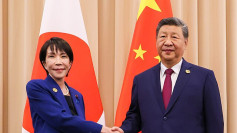Chinese health authorities have reported over 7,700 confirmed cases of chikungunya virus across the southern province of Guangdong, marking one of the country's most significant local outbreaks of a mosquito-borne illness in recent memory. Nearly 3,000 of the cases were recorded in the last week alone, with the majority concentrated in the city of Foshan.
According to the Guangdong Center for Disease Control and Prevention, 96% of infections in the final week of July were reported in Foshan, prompting hospitals to isolate patients under mosquito nets. A 12-year-old boy in Hong Kong who recently traveled to the city became the first chikungunya case confirmed in the territory.
Officials traced the initial cluster to Lecong Town in Foshan's Shunde District, where the first local transmission of the virus this year was confirmed on July 8. Authorities say the outbreak began with an imported case, though the country of origin was not disclosed.
Chinese Center for Disease Control and Prevention chief expert Liu Qiyong told state broadcaster CCTV that favorable mosquito-breeding conditions and the introduction of a highly transmissible strain from the Indian Ocean have contributed to the severity of the outbreak.
Local governments have escalated their mosquito control efforts. In Foshan, officials released more than 5,000 mosquito-eating fish into lakes and waterways. Drones are being deployed to scan for stagnant water in hard-to-reach areas. In Guangzhou, a team from Sun Yat-sen University released larvae of Toxorhynchites splendens, a non-blood-feeding mosquito species that consumes the larvae of Aedes aegypti, the primary chikungunya vector.
Residents across Guangdong have been ordered to remove sources of stagnant water, such as flowerpots, bottles, and appliance trays. Violators face fines of up to 10,000 yuan (approximately $1,400). Some cities briefly imposed quarantines on travelers from Foshan, though those restrictions have since been lifted.
Chikungunya is transmitted via mosquito bites, not person-to-person contact. Symptoms-including fever, joint pain, rash, and fatigue-typically appear 3 to 7 days after exposure. While most patients recover within a week, lingering joint pain may persist for months or years in some cases. According to the World Health Organization, fatalities are rare.
On July 31, the National Health Commission and the State Administration of Traditional Chinese Medicine issued the 2025 clinical guidelines for chikungunya treatment. The document emphasizes symptomatic care and discourages the use of antibiotics, corticosteroids, and immunoglobulin therapies.
Imported cases have previously been detected in China since 2008, with limited outbreaks in 2010 and 2019. The current surge, spanning at least 13 cities in Guangdong, represents a significant shift in transmission dynamics. The virus has now been reported in over 110 countries, and the World Health Organization has warned of increasing global spread.
Beyond China, France and Italy have reported chikungunya cases this season. In Italy, health officials are also confronting a deadly outbreak of West Nile virus, with at least 10 deaths and 57 new cases reported in late July, concentrated in the province of Latina.






